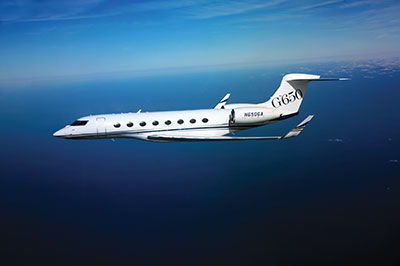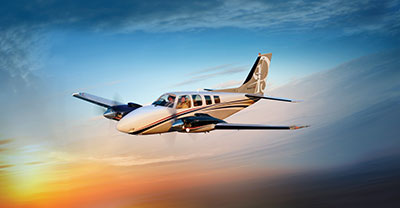
Features
Operations
Let’s make a deal
Jet versus turboprop. Long-range, midsize or light jet. There’s a lot of research that goes into acquiring a private airplane.
May 7, 2014 By David Carr
Jet versus turboprop. Long-range, midsize or light jet. There’s a lot of research that goes into acquiring a private airplane. But simply landing on an aircraft is only the beginning. More homework needs to go into who is going to finance the asset, how the deal is structured or whether leasing is a better option.
 |
|
| There are several financial options available to operators seeking to add aircraft to their fleets. Photo: iStock
|
Cheap money has seen off the recession and now might be the time to consider an airplane purchase. There are also more lenders out there willing to make the deal. After abandoning the business aviation-financing sector during the recession, lenders have returned to the market, resulting in a more competitive and crowded playing field.
This is made even more so by the fact that, despite historically low interest rates, more than half of business jet deals are still cash-driven (the number seems to float between 60 and 70 per cent) and leasing, once the almost exclusive purview of the commercial airline sector, has emerged as a growing trend.
The exit of lenders willing to do aircraft deals between 2008 and 2011 left a yawning gap in the business that had a negative impact, especially on the used airplane market and jets under $5 million. The return of lenders is well timed. 2013 marked the first increase in new corporate jet deliveries in five years according to the Washington D.C.-based General Aviation Manufacturers Association. Values of older aircraft appear to be stabilizing after year-over-year losses, and corporate flight departments that had previously deferred new airplane purchases for financial reasons and shareholder optics are now considering fleet upgrades. This activity is resulting in new airplanes to finance, although not all airplanes are all things to all lenders.
For financiers, business aviation has traditionally been a safe risk with dependable returns backed by a hard asset that is global and highly redeployable in case of default. Still the white-heat of pre-recession deals left the sector cold as owners walked away from airplanes and the value of the asset plunged as repossessions soared.
What to expect
Financing aircraft is a complex and highly specialized undertaking of conditions and covenants, often confusing even unto itself. Despite the similarities, even commercial aircraft lenders, where the asset is essential to the company’s core business, may struggle to understand private aviation financing where the asset is a business tool. It is always recommended that a buyer deal with a financial institution that has expertise in business aviation, the growing number of financing options, changing regulatory and tax and accounting implications, and an understanding of the industry itself.
 |
|
| Large-cabin and long-range aircraft such as the Bombardier Challenger and Gulfstream G650 fuelled growth in 2013. PHOTO: Gulfstream
|
Buyers returning to the cash window for the first time in five to six years are likely to experience culture shock. Pre-recession, it was not uncommon for deals to be completed in a week or less. A deal may now take two months or longer to negotiate as banks practise greater due diligence, add covenants based on operations, and are more likely to take a harder kick at the airplane’s tires. (This is one of the reasons those who can afford a private jet prefer to take out the chequebook, although there is a growing trend toward the owner refinancing the aircraft after it has been delivered.)
Large-cabin and long-range aircraft such as the Bombardier Challenger and Gulfstream G650 fuelled growth in 2013, and remain the “Sweet spot” (along with airplanes under five years old), especially for big lenders. Depending on the credit-worthiness of the buyer, a larger airplane could attract financing for up to 80 per cent of the value, at 2.5 per cent fixed over five to seven years (floating loans are somewhat lower). Even here there are twists, such as new aircraft designs that have not built up a performance record.
After the benchmark set by the larger or newer airplane it becomes a sliding (or rising) scale with financing becoming harder to find and terms steeper depending on the age of the aircraft. Until recently, 10 years was considered the tipping point. But as more lenders chase after a limited number of deals and a stabilizing of values, airplanes in the 10 to 15 year range have returned to the spotlight.
In all cases, and depending on the credit-worthiness of the purchaser, a lender may ask for corporate or personal guarantees to protect against the value of the asset, which is still vulnerable as the airplane ages. Age is not always the issue. Should a deal go pear shaped, the lender wants to parcel off the airplane and recover its losses as quickly as possible. No lender wants to be stuck repossessing an airplane that has lost significant market value due to negligence or deferred maintenance.
There are pre-emptive steps an owner should take to maintain the value of the airplane including OEM service packages such as Bombardier’s Smart Parts Plus protection program that helps predict aircraft maintenance costs and provides protection against unexpected parts and maintenance expenses. Indeed, many lenders will insist on such protections along with covenants that cover how the airplane is operated, and engine and airframe maintenance.
Alternatives to cash or financing
An alternative to financing an airplane is a lease agreement. The commercial aircraft sector has traditionally had access to more financing tools than business aviation. Leasing is one example. A basic operating lease is the most common tool, where possession of the aircraft belongs to the lessee, but is operated by the lessor as if he owned the asset. The lessor is responsible for maintenance, insurance and administration of the aircraft. Lessees often insist on maintenance reserve funds to ensure the aircraft is in a state of good repair.
 |
|
| When deciding on a new aircraft, it is always recommended that a buyer deal with a financial institution that has expertise in business aviation. PHOTO: Beechcraft
|
One significant advantage of an operating lease is that it eliminates the lessor’s exposure to falling airplane values, which could top 40 per cent at the peak of the last recession. In a lease agreement the lessee walks away from the airplane at the end of the lease. There are also tax considerations in leasing. Corporate jets are big-ticket items with considerable tax write-off value that a lessee may be able to take full advantage of where the buyer cannot. Whatever the justification, leasing has become a fast growing financing option with some institutions reporting that leases now account for 40 per cent of their business.
Aircraft financiers are more than money machines. The right lender can bring value to the acquisition by helping find the right airplane and should be brought in early in the process to get an idea of costs. Do not be shy about shopping for a lender as you would the airplane, and asking for several proposals. Different institutions are also going to have different specialties. Not all lenders, for example, are going to be players in the leasing game. An aircraft finance broker can help sort through proposals and the labyrinth of terms and covenants.
There are signs that the industry could return to a 2008 market high of more than 1,200 new corporate jets delivered as early as 2008, which will have a ripple effect on the used airplane sector. Canada has traditionally captured a healthy share of the North American market and is breaking out of traditional patterns, especially in large-cabin and international operations. That are a lot of airplanes that need to be financed. Expect more lenders to enter the field as demand for new airplane purchases increase and more innovative financing tools are made available to the private aircraft sector.